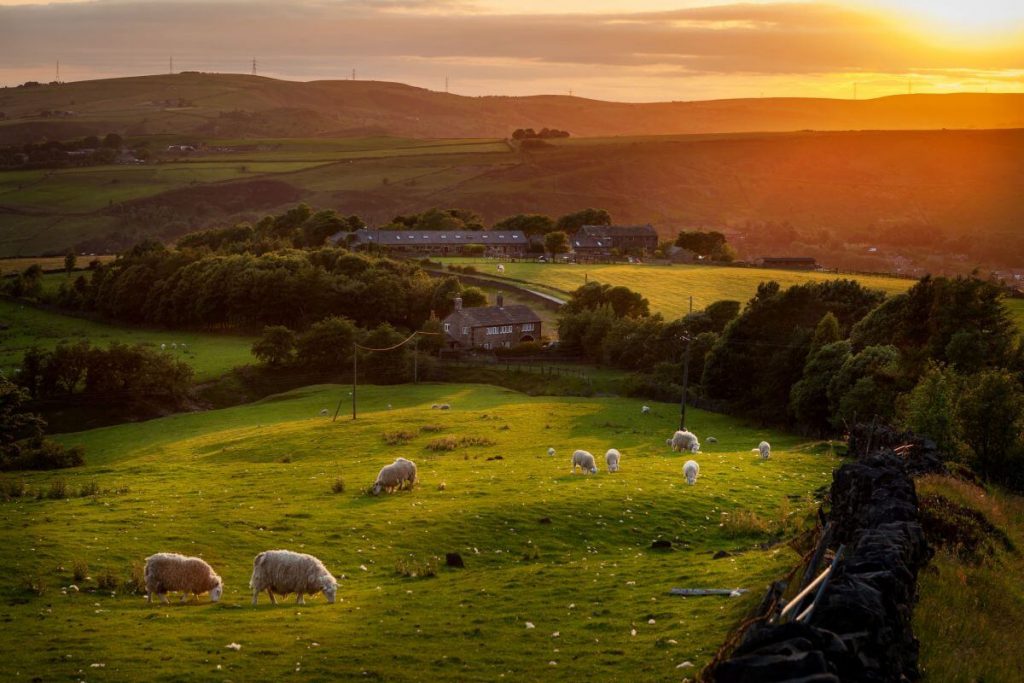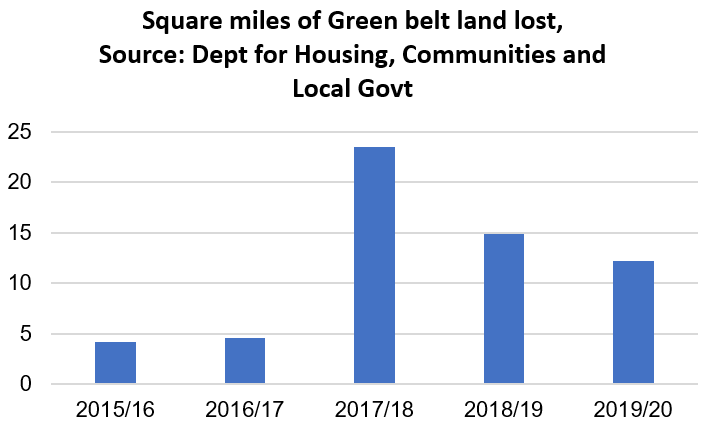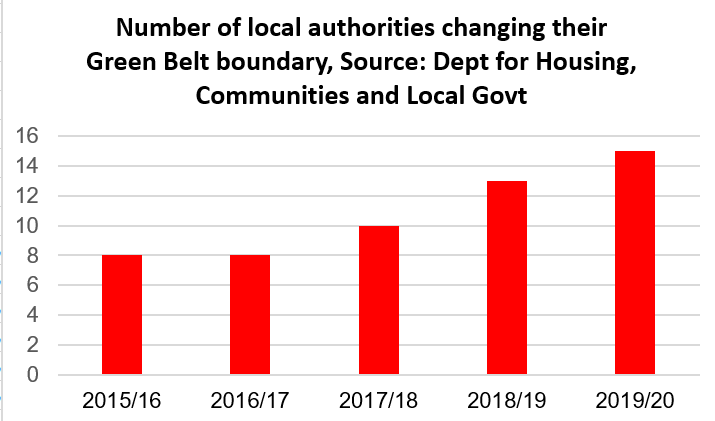Figures released by the Department for Housing, Communities and Local Government show that we have lost nearly 12 square miles of supposedly protected green space per year since 2015 because of the rampant over-development that is partially linked to the failure to control immigration.


The total land area in the green belt which was set aside for development by councils in 2015-20 was nearly 60 square miles (more than three times the area of the London Borough of Brent, which is just under 17 square miles), with the most notable year being 2018/19 during which more than 23 square miles of green belt land were set aside for building.
The worst offending councils in the past three years have been Guildford, East Hertfordshire and Coventry. The number of local authorities changing their Green Belt boundary has nearly doubled since 2015, from 8 to 15 (see Figure 2 below).

There is an obvious connection between uncontrolled immigration equal to a city arriving each year and a housing crisis which means people being priced out of the market, unable to afford shelter and the rapid destruction of our beautiful ecology. Immigration has been, and is likely to continue to be, a major factor in housing demand. Non-UK net immigration has run at nearly 300,000 per year since 2001.
65% of UK household growth from 1996 to 2014 was the direct consequence of international migration to the UK. That will have had a significant impact on the demand for housing. Between 2010 and 2014, households headed by persons born in the UK increased by 32,000 per year on average; households headed by persons born outside the UK by 115,000 or 78%
More recent figures derived from projections produced by the Office for National Statistics suggest that, should immigration run at the average level of the past five years or so, England would need to build 107,000 homes per year just to provide accommodation to new arrivals.
The impact of arrivals from abroad alone would drive the need to make available nearly 2.7 million homes between 2018 and 2043 – equal to about nine cities the size of Glasgow or thirteen cities the size of Bradford (which have been 200,000 to 300,000 homes each).
It’s a huge challenge to build homes quickly enough to cope with such an influx, not to mention all the loss of precious green space that this involves.
There is a clear need to address deficiencies in supply yet it is surely just as important, and for many people preferable, that immigration controls be tightened effectively (as most of the UK public are keen to see – with 57% saying that immigration has been too high in a February 2021 YouGov poll) before the UK loses more of its beautiful countryside:
- It was reported in 2018 that a million planned new homes between Oxford and Cambridge would cover an area of countryside larger than Birmingham.
- It was reported in 2019 that plans have been approved to build hundreds of homes every year on the South Downs national park.
- We are losing a significant amount of our precious and irreplaceable green belt. More than 38 square miles of green belt land were set aside for construction by local authorities between 2012 and 2018. Indeed, the year 2017/18 saw the largest release of green belt land to date, with more than 19 square miles of supposedly protected countryside allocated by ten councils for use as building sites (Campaign to Protect Rural England analysis).
- There are plans submitted for nearly half a million homes on land set to be released from the green belt.
- The London Green Belt Council said in early 2019 that the number of homes proposed on the Capital’s green belt had almost doubled over the course of two years to more than 200,000.
